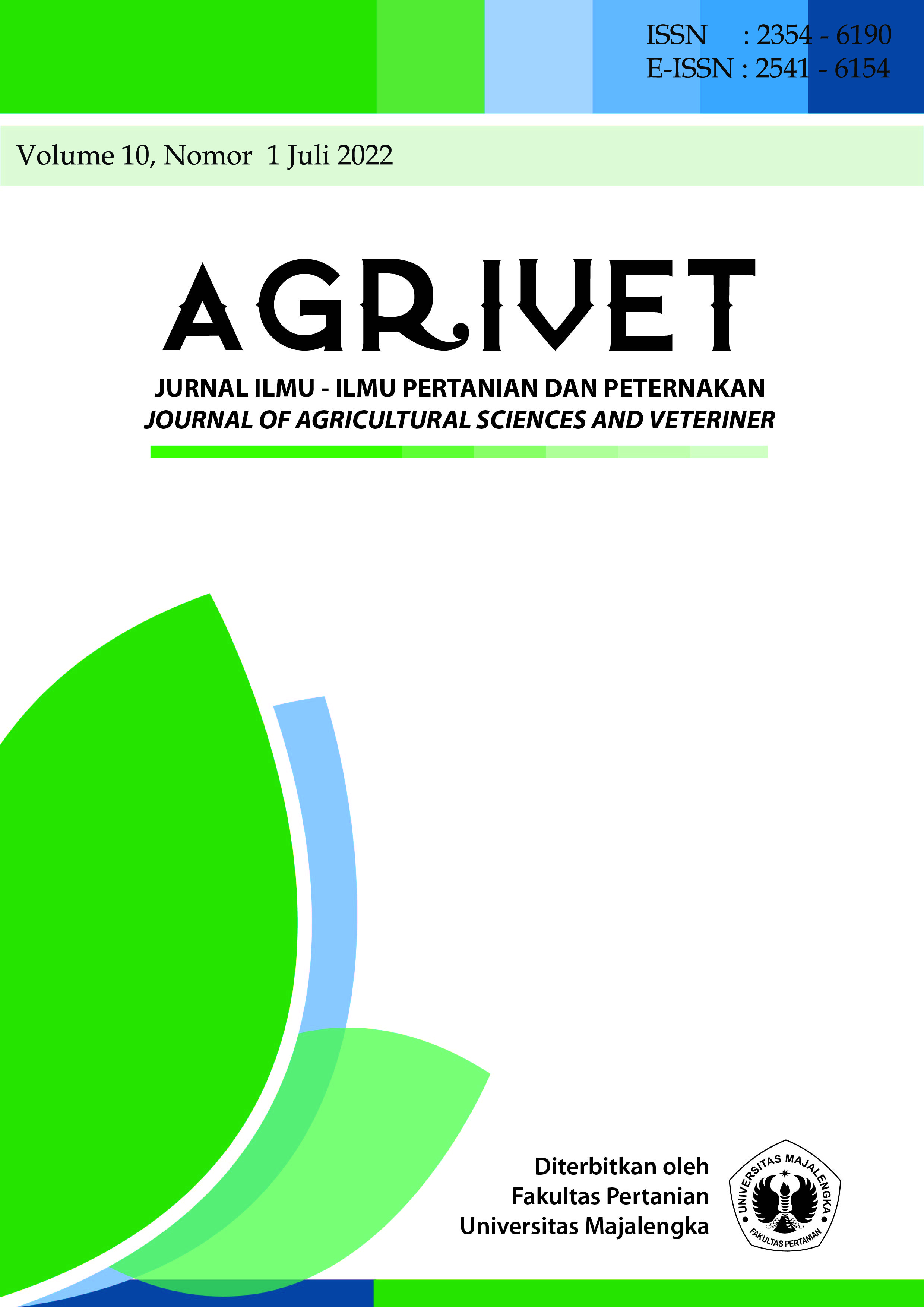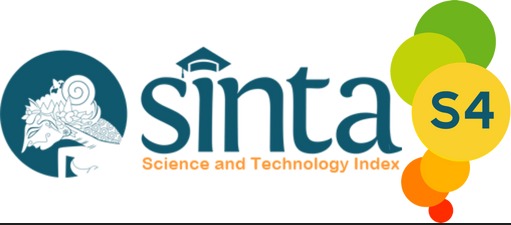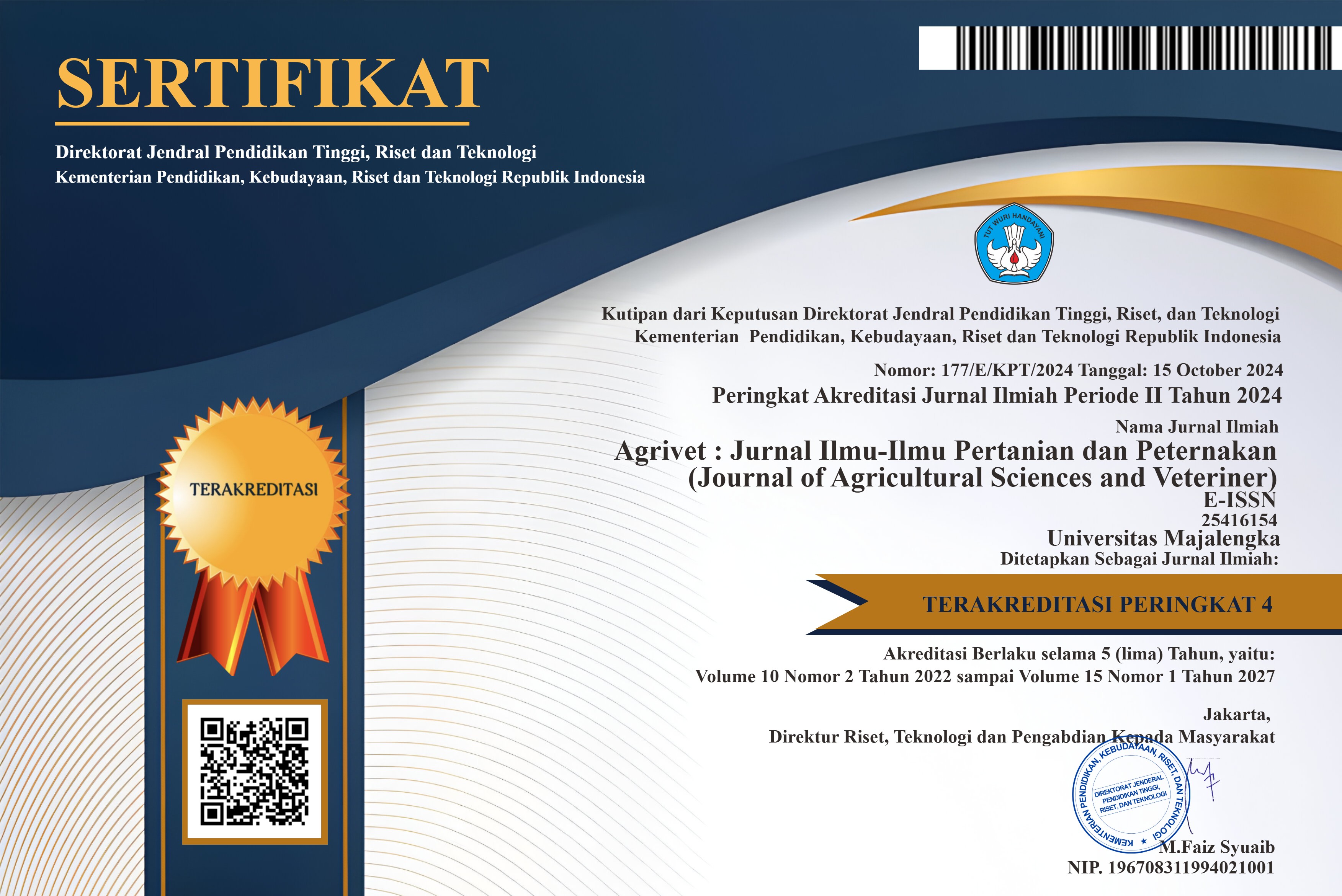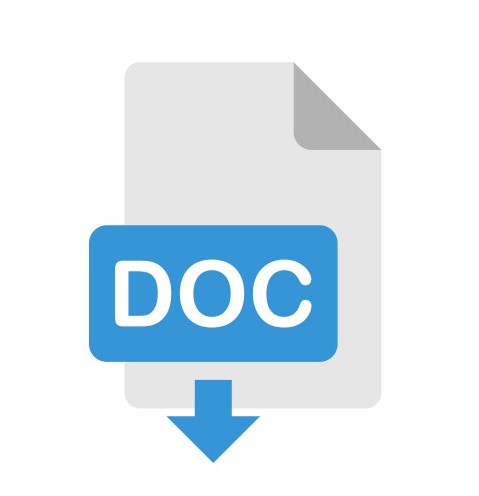ANALISIS BASIS KOMODITAS KUNYIT DENGAN MENGUNAKAN TEKNIK LQ (LOCATION QUENTIENT) DI KABUPATEN SUKABUMI
DOI:
https://doi.org/10.31949/agrivet.v10i1.1877Abstract
This research on the analysis of the turmeric commodity base in Sukabumi Regency aims to determine the results of the base analysis using the LQ (Location Quentient) technique. The source data in this study is secondary data that has been obtained and then a comparison analysis of turmeric is carried out from year to year during the last five years in all sub-districts in Sukabumi Regency. The LQ analysis carried out in this study was based on data on the area of the turmeric plant spread in the sub-districts of Sukabumi Regency. The LQ value obtained for the turmeric commodity in Sukabumi Regency in the last five years (2016-2020) has fluctuated every year. The results of the research conducted show that turmeric in Sukabumi Regency is a non-basic commodity, meaning that turmeric has not been able to become a leading commodity competitively and comparatively with an LQ result of 0.8 for the 2016-2020 period. The increase in the amount of production and harvested area of turmeric in the Sukabumi Regency area was due to turmeric having a large market and promising prices, while the decline was due to the unstable and unpredictable climate and weather resulting in crop failure.
Keywords:
Analysis of LQ (Location Quentient), Turmeric, Sukabumi RegencyDownloads
References
ARIEF DARYANTO DAN YUNDY, HAFIZRIANDA. 2010. Model-model Kuantitatif untuk Perencanaan Pembangunan Ekonomi daerah: Konsep dan Aplikasi. Bogor. PT. IPB Press.
BADAN PUSAT STATISTIK KABUPATEN SUKABUMI (2019). Kabupaten Sukabumi Dalam Angka 2019. Sukabumi : Badan Pusat Statistik Kabupaten Sukabumi
BADAN PUSAT STATISTIK KABUPATEN SUKABUMI (2019). Kabupaten Sukabumi Dalam Angka 2019 Sukabumi:DinasKependudukan Dan Pencatatan Sipil
BADAN PUSAT STATISTIK KABUPATEN SUKABUMI (2019). Kabupaten Sukabumi Dalam Angka 2019. Sukabumi :Dinas Pertanian Pangan dan Hortikultura Kabupaten Sukabumi
FAUZIAH, M. 1999. Temu-Temuan dan Empon-Emponan Budidaya dan Manfaatnya. Yogyakarta. Kanisius.
HANDIKA , ROSITA. 2021 Analisis Komoditas Biofarmaka Unggulan di Kabupaten Karanganyar. Jombor Sukoharjo Universitas Veteran Bangun Nusantara
HENDAYANA, RACHMAT. 2003. Aplikasi Metode Locatin Quentient (LQ) dalam Penentuan Sektor Basis Komoditas Unggulan . Informatika Pendidikan vol. 13 Desember
NAWAWI, HADARI. 1991. Metodologi penelitian Bidang Sosial.Yogyakarta. Gadjah Mada University Press.
PARAMITASARI, DYAH. 2011. Budidaya Rimpang Jahe, Kunyit, Kencur dan Temulawak. Yogyakarta. Cahaya Atma Pusaka.
SUGIYONO. 2015. Metode Penelitian Kombinasi. Bandung. Alfabeta.
SUKMAWANI, RENY, DKK. 2014. Determining Agricultural Superior Commodity in The District of Sukabumi Trough a Combination Method of LQ, Descrption Scoring &CompetitivAnalysisResearchJournal of AgricultureandEnviromental Management. Vol 3 (11). http://www.apexjournal.org
SARYONO. 2010. Metode Penelitian Kualitatif. Bandung. PT. Alfabeta.
TANGKILISAN HESSEL NOGI. S. 2007. Manajemen Publik. Jakarta. Grasindo.
WINARTO, I. W. 2004. Khasiat dan Manfaat Kunyit. Jakarta.Agro Media Pustaka.
Published
How to Cite
Issue
Section
License
Copyright (c) 2022 Sandi Agustian

This work is licensed under a Creative Commons Attribution-ShareAlike 4.0 International License.
An author who publishes in the Jurnal Agrivet agrees to the following terms:
- Author retains the copyright and grants the journal the right of first publication of the work simultaneously licensed under the Creative Commons Attribution-ShareAlike 4.0 License that allows others to share the work with an acknowledgment of the work's authorship and initial publication in this journal
- The author is able to enter into separate, additional contractual arrangements for the non-exclusive distribution of the journal's published version of the work (e.g., post it to an institutional repository or publish it in a book) with the acknowledgment of its initial publication in this journal.
- The author is permitted and encouraged to post his/her work online (e.g., in institutional repositories or on their website) prior to and during the submission process, as it can lead to productive exchanges, as well as earlier and greater citation of the published work












